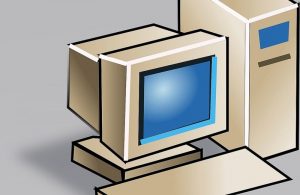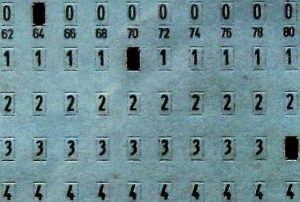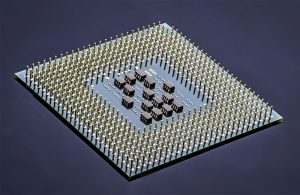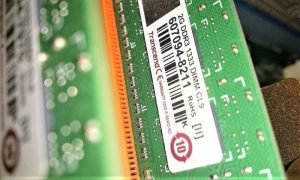Fourth generation of computers
In the fourth generation of computers there was a radical change that marked a before and after in the technological revolution, all this due to the arrival of microprocessors that meant a great advance of microelectronics. These are fast, high-density integrated circuits. Economical and reduced in size, the microcomputers extend to the industrial market. With this, the personal computers appear, becoming indispensable in our society, giving the welcome to the "computer revolution".
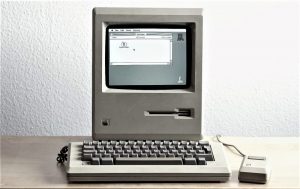
- Date: 1971 to 1981
- Inventors: Steve Jobs, Bill Gates
- Devices: Apple I and II, Macintosh, IBM PC, ALTAIR 8800
What is the fourth generation of computers?
The fourth generation of computers (1971 to 1981) was produced with the microprocessor of electronic circuits. The small size of the chip microprocessor was fundamental for creating personal computers (PCs). Today, LSI (Large Scale Integration) and VLSI (Very Large Scale Integration) technologies allow thousands of electronic components to be stored on one chip. Using VLSI technology, a small computer has nothing to envy of a first-generation computer that occupied a full room. Microcomputers are definitely here to stay.
Characteristics of the fourth generation of computers
The most important characteristic of fourth generation computers is undoubtedly their size, which was due to the use of microprocessor technology / VLSI. Thanks to this, they had other advantageous features:
- Much less expensive.
- More laptops.
- Much smaller size.
- Available for any type of person.
- Basic Computer Language.
- Computer Mouse and GUI make computers more enjoyable.
- More powerful and reliable than previous generations.
- Fast processing power with less power consumption.
- No air conditioning required.
- Commercial Production.
History
The fourth generation of computers runs from 1971 to 1981. It was born with the development of the Microprocessor that opens the doors to personal, commercial and domestic computers. A diversity of games and programs of all kinds appeared. The emergence of software undoubtedly marks an icon in the computer revolution, so this era is also known as the software generation.
Size of the fourth generation computers
Fourth generation computers are modern computers. Size began to decrease with the improvement of integrated circuits. Very Large Scale (VLSI) and Ultra Large Scale (ULSI) ensured that millions of components could be integrated into a small chip. It reduced the size and price of computers at the same time, increasing power, efficiency and reliability. The Intel 4004 chip, developed in 1971, took the integrated circuit a step further by placing all of a computer’s components (central processing unit, memory, and input/output controls) on a tiny chip.
Inventions of the fourth generation of computers
The idea of information technology changed greatly with the invention of microprocessors and VLSI (large-scale integration) technology. They were the introduction to today’s computers, being basically an entire Central Processing Unit (CPU) of a computer in an integrated circuit. Actually, they are extremely complex and intricate integrated circuits. The first microprocessor was first introduced in 1971 by Intel, invented by its employee Ted Hoff. They called it Intel 4004; the first computer on a chip. These chips allowed computers to fit on a desktop computer.
Inventors of the fourth generation of computers
Steven Paul Jobs: (Steve Jobs) Born in San Francisco, California, on February 24, 1955, son of two students from the University of Wisconsin, who gave him up for adoption. Jobs was a very intelligent child, but not determined. He joined Steve Wozniak to found Apple in 1976, of which he was president. During his life, he experienced various paths, including abandoning his studies at the University. He was an inventor, designer and entrepreneur. A figure of the computer revolution, he leaves us an inheritance of impressive products of his Apple brand, such as the iPod, iPhone and iPad, icons of modern technology. In 1985, he tried another way and launched Pixar Animation Studios, and years later he returned to Apple. Jobs suffered from a cancer that led to his death in 2011.
William Henry Gates III: (Bill Gates) Born February 28, 1955. The son of a prominent lawyer and a university professor, he grew up with his sister in Seattle. He was a student of a Public Elementary School, and then studied at the outstanding private school called Lakeside, which by 1968 already had a computer. His contact with the machine allowed Gates to become passionate about computers. In Lakeside, during 1975, he met Paul Allen and together they formed Microsoft, an acronym for “micro-computer” and “software”. The company stumbled in its early days, but by 1979 Microsoft was paying a significant amount of money. At just 23, Gates was the head of his company, running it with great business sense and insight for software development. Today, Microsoft Windows (in all its versions) is used on most of the world’s personal computers.
Featured Computers
- ALTAIR 8800: the first personal computer. It was designed by Ed Roberts, the head of MITS using an Intel 8080 CPU chip (first 16-bit microprocessor) and an elegant metal casing, and produced in 1975 by Micro Instrumentation Telemetry Systems as a personal computer. Sales increased enormously when sold with a mouse and keyboard, becoming the initial influence of personal computing in the world. He could execute the BASIC language, written by Bill Gates and Paul Allen sold as “Altair BASIC”, becoming the first Microsoft product of his company.
- Apple I and Apple II series: Steve Wozniak first developed the original Apple computer, Apple I, in 1976. It was Apple’s first product; a small personal computer. His friend Steve Jobs helped him sell the computer, and later helped him make the Apple II. Wozniak and Jobs were the real co-founders of Apple. They developed the Apple II, which was one of the first highly productive and successful home microcomputers. It was the first of their Apple II series that ended in 1993. A total of about five million were sold. ROM and Integer BASIC, developed by Wozniak, worked. He also developed Disco II, a floppy disk drive for storage, in 1978.
- Macintosh: Apple also introduced the Macintosh in 1984 based on the Motorola 68000 microprocessor. Initially, it was not a commercial success, but it finally was with the introduction to desktop publishing. Apple also produced the Apple III series in 1980 but was unsuccessful due to an overheating problem.
- IBM PC: The IBM Personal Computer is the original version and progenitor of the IBM PC compatible hardware platform.
Many other Apple computer models were produced during the fourth generation of computers. Some proved to be successful, while others did not.
How to cite this article?
Briceño V., Gabriela. (2019). Fourth generation of computers. Recovered on 23 February, 2024, de Euston96: https://www.euston96.com/en/fourth-generation-of-computers/





